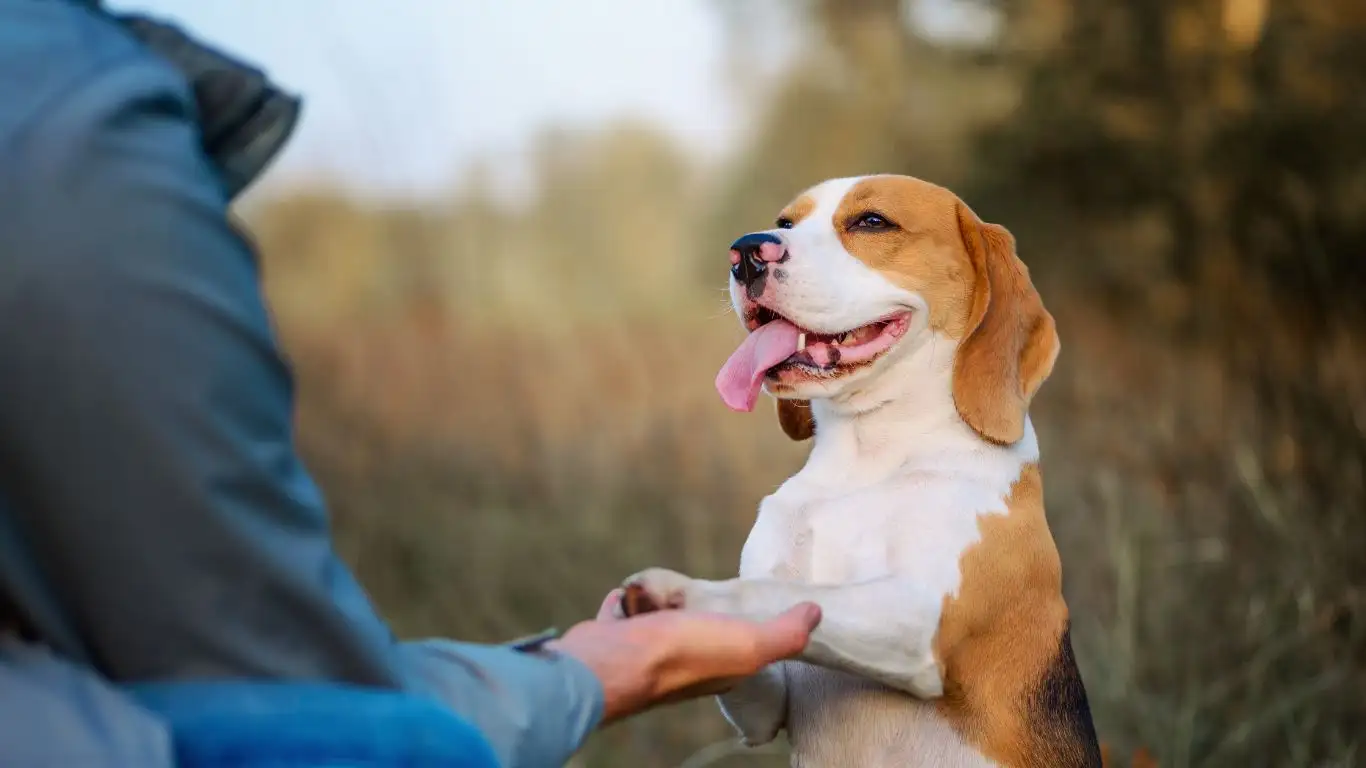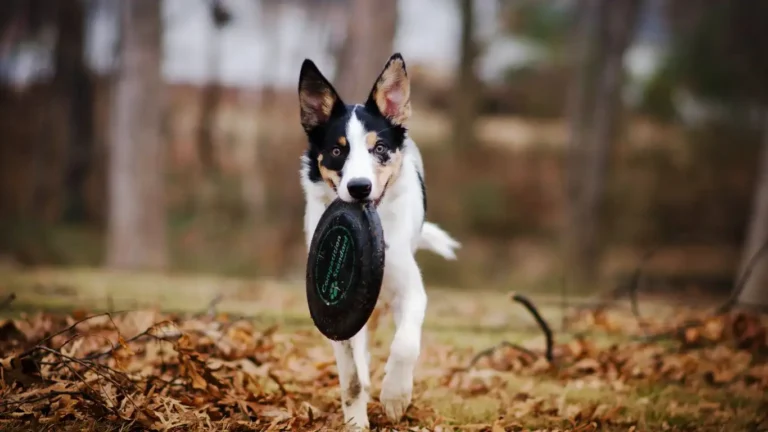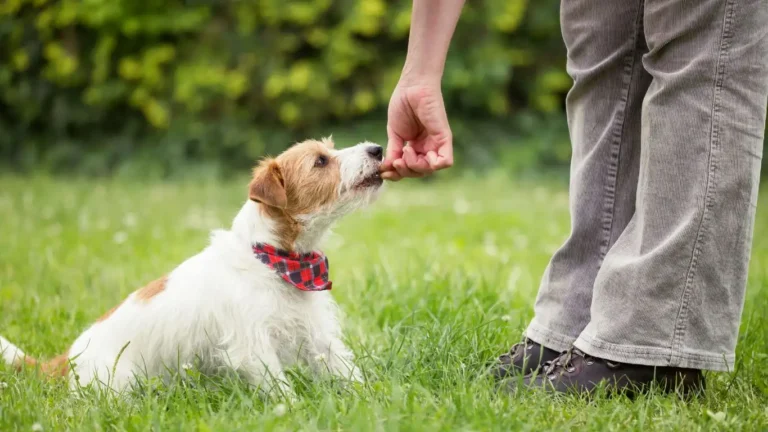How to Train a Dog to Stay Calm at the Vet: Expert Tips for Stress-Free Visits
Taking your dog to the vet can be a stressful experience for both you and your dog. As a Certified Professional Dog Trainer (CPDT-KA), I’ve worked with many dog owners who have struggled with getting their dogs to stay calm at the vet. If you’ve ever seen your dog panic as soon as they step into the veterinary office, you know just how difficult it can be. But the good news is, with the right techniques, you can train your dog to stay calm and even enjoy their vet visits. In this article, I’ll share practical strategies on how to train a dog to stay calm at the vet, drawing from my personal experience as well as tried-and-true methods I use with my clients.
Understanding the Root Cause of Vet Anxiety
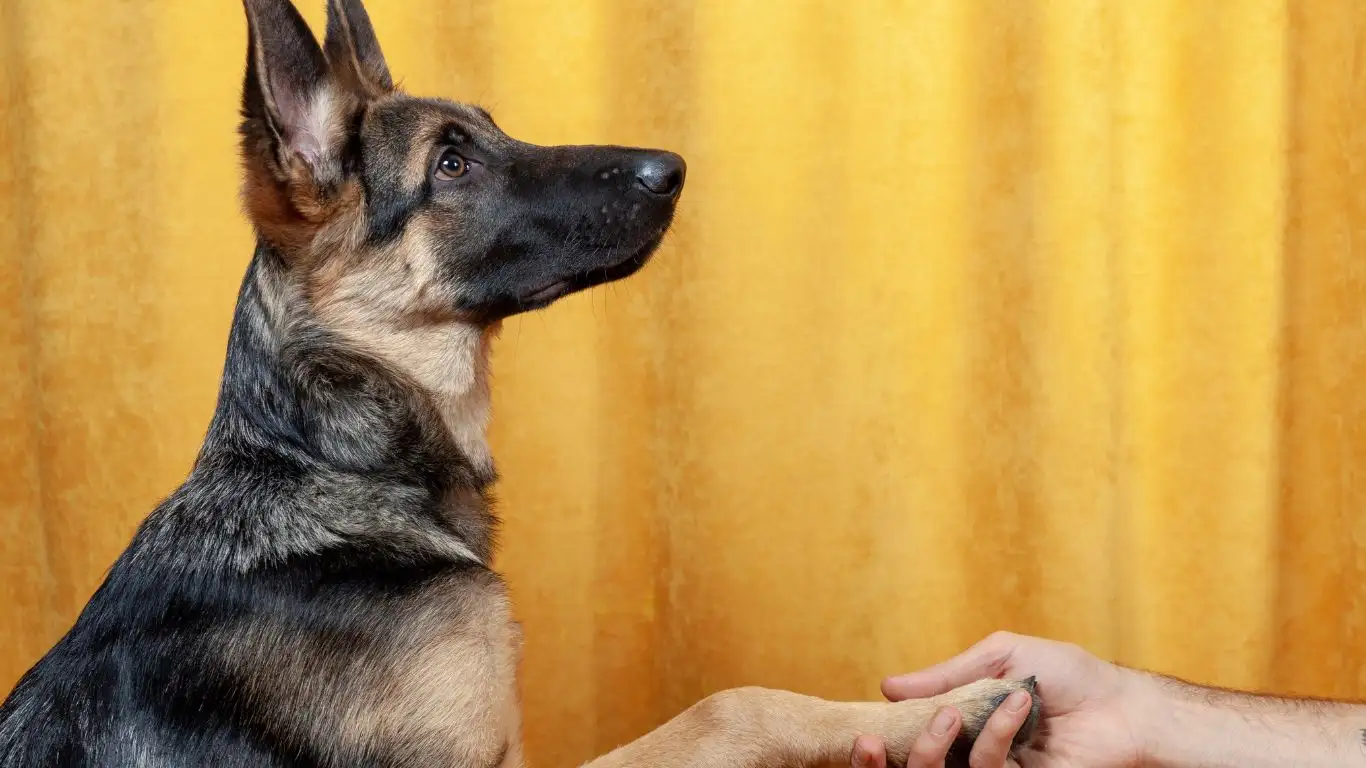
Before diving into training techniques, it’s essential to understand why dogs often feel anxious at the vet. Dogs are creatures of habit and routine, so when they experience something out of the ordinary—like a trip to the vet—it can cause stress. Vet visits often involve unfamiliar smells, sounds, and environments that may be overwhelming for your dog. Moreover, dogs can associate the vet with unpleasant experiences like vaccinations, exams, or other medical procedures, which can heighten their anxiety.
In my experience, many dogs develop a negative association with vet visits from a young age, especially if they’ve had a rough experience or haven’t been adequately socialized to the environment. This can make it even more challenging to get them to stay calm. Understanding these triggers is the first step in addressing your dog’s anxiety and setting up a successful training plan.
Positive Association: The Key to Calming Your Dog
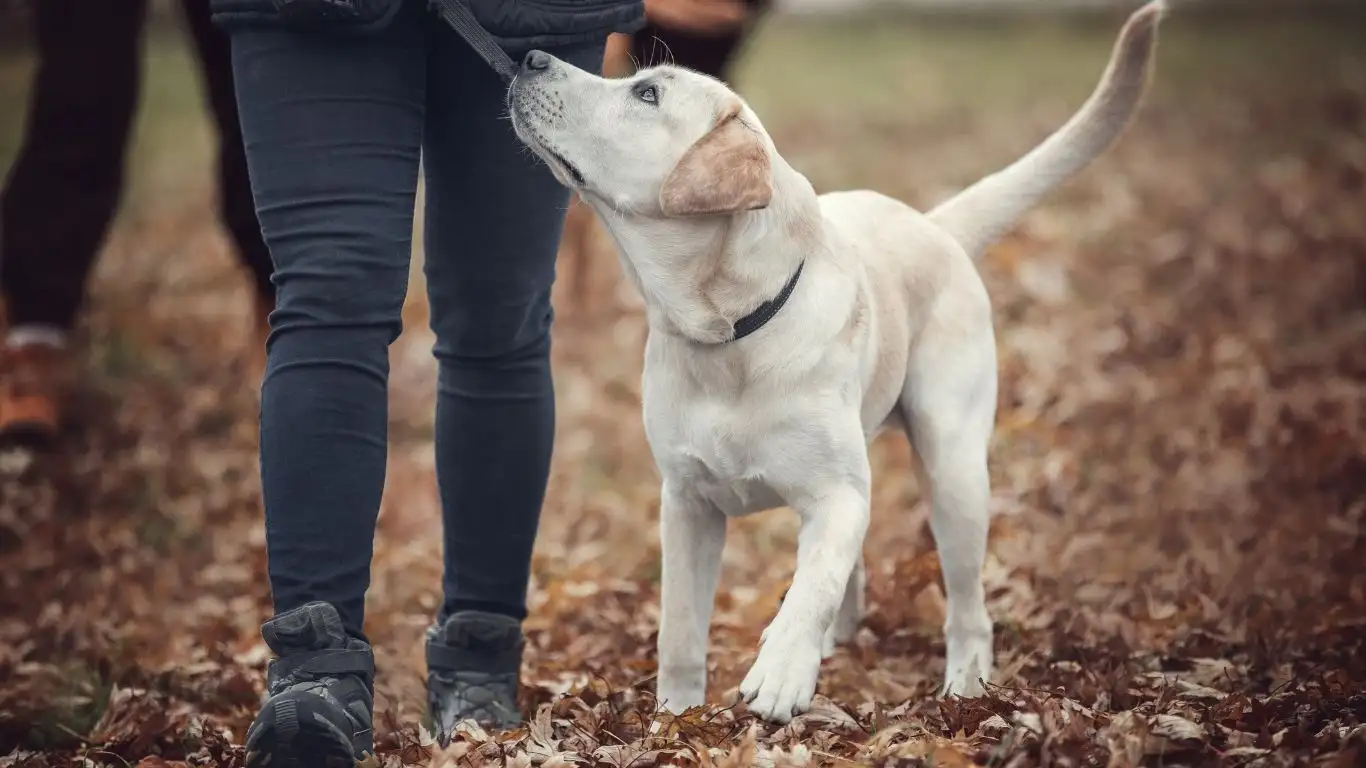
One of the most effective ways to train your dog to stay calm at the vet is through positive association. If your dog has learned to associate the vet with unpleasant experiences, it’s time to flip the script and make the vet a place where good things happen. Here’s how you can do it:
- Start with visits that don’t involve exams: Schedule short visits where the vet only greets your dog without performing any medical procedures. During these visits, reward your dog with treats, praise, and petting. The goal is to make the vet’s office a place where your dog gets positive attention and rewards, so they begin to associate the location with good things.
- Bring your dog’s favorite treats: Don’t just rely on the vet’s office treats. Bring a high-value treat that your dog loves, whether it’s something special they don’t usually get, or something with a really strong scent to capture their attention. Use the treats to reward calm behavior as you enter the office and throughout the visit.
- Play calming games: Before heading to the vet, practice some easy games like sit, stay, and paw. This not only helps reinforce positive behaviors but can also tire out your dog, making them less likely to become anxious when they’re there.
Creating a positive experience is all about repetition. The more often you associate the vet with treats and positive reinforcement, the more your dog will learn that going to the vet isn’t something to fear.
Desensitization: Gradual Exposure to the Vet Environment
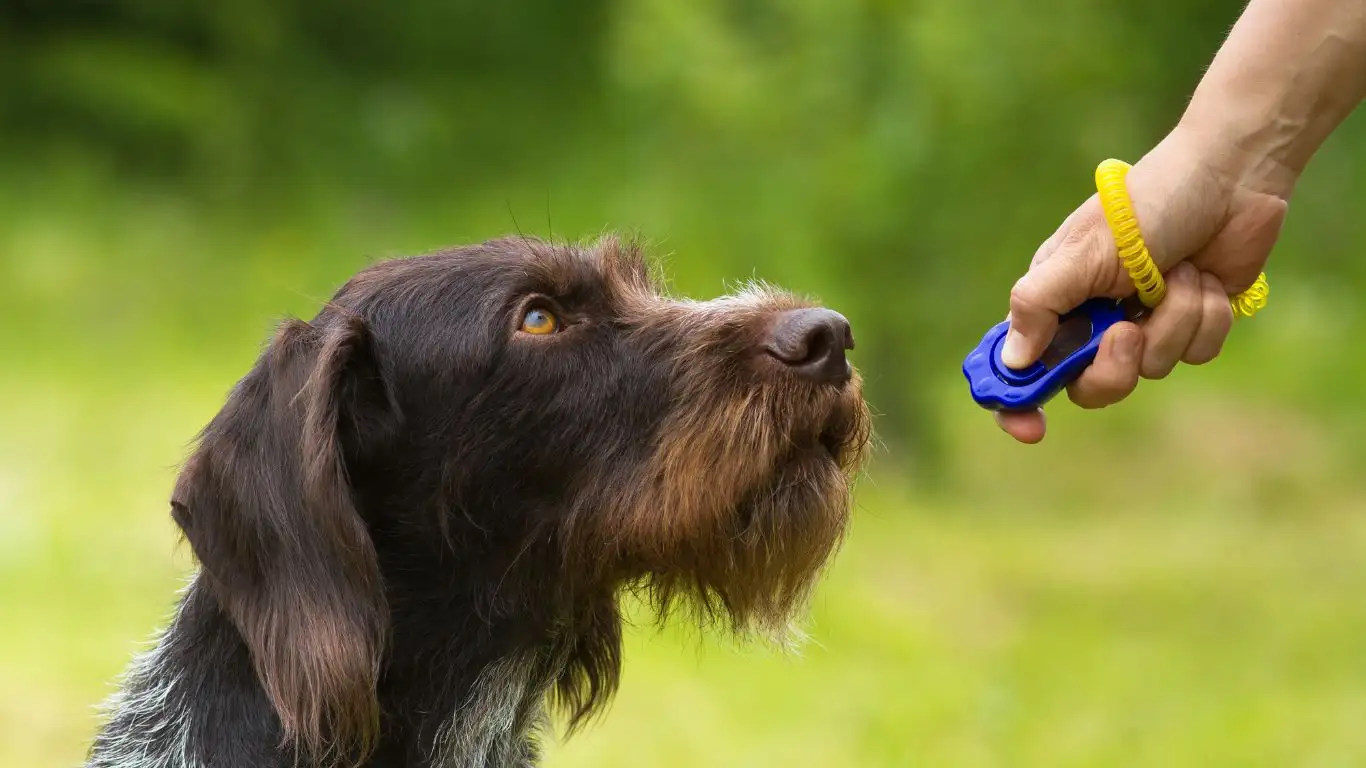
Desensitization is another valuable tool in the process of training your dog to stay calm at the vet. It’s all about gradually exposing your dog to the vet environment without overwhelming them. The idea is to slowly increase your dog’s exposure to the vet’s office, starting with less intimidating elements and building up to the full experience. Here’s how you can begin:
- Start with car rides: If your dog gets anxious just from being in the car, begin by making car rides a positive experience. Take your dog on short car rides to the vet, but don’t enter the building. Use the car rides to reward your dog with treats and praise. Once your dog is comfortable with the car ride, you can begin taking them into the vet’s office.
- Short visits to the lobby: Upon arriving at the vet, take your dog only to the lobby, where there are usually fewer triggers. Allow your dog to sniff around and get used to the new environment without going further into the clinic. Stay for only a few minutes, rewarding your dog for calm behavior.
- Increase the level of exposure: Gradually increase your dog’s exposure by allowing them into exam rooms, interacting with staff, or even being weighed. Each time, reward your dog for calm behavior. If your dog seems stressed, scale back and give them more time to adjust to each step.
It’s crucial to be patient and go at your dog’s pace. If your dog is particularly nervous, don’t rush the process. The goal is to build your dog’s tolerance to the vet environment over time, which will help them stay calm when they’re faced with an actual exam.
Incorporating Training into Daily Life
Training your dog to stay calm at the vet doesn’t have to be limited to the actual vet visits. Incorporate calming behaviors into your daily routine, so your dog gets used to being calm in different settings.
- Practice relaxation exercises: Teach your dog to relax on command by incorporating relaxation exercises into your daily training routine. One simple exercise is to have your dog lie down on a mat or bed while you practice “settling” behaviors. Reward them when they stay relaxed for longer periods.
- Use calming aids: There are various calming aids available, such as pheromone diffusers or calming wraps. These can be used alongside your training techniques to help reduce your dog’s anxiety during vet visits.
By practicing these techniques regularly, your dog will be more likely to remain calm when they step into the vet’s office, as they’ll be accustomed to a more relaxed state in everyday situations.
Creating a Calming Routine for Vet Visits
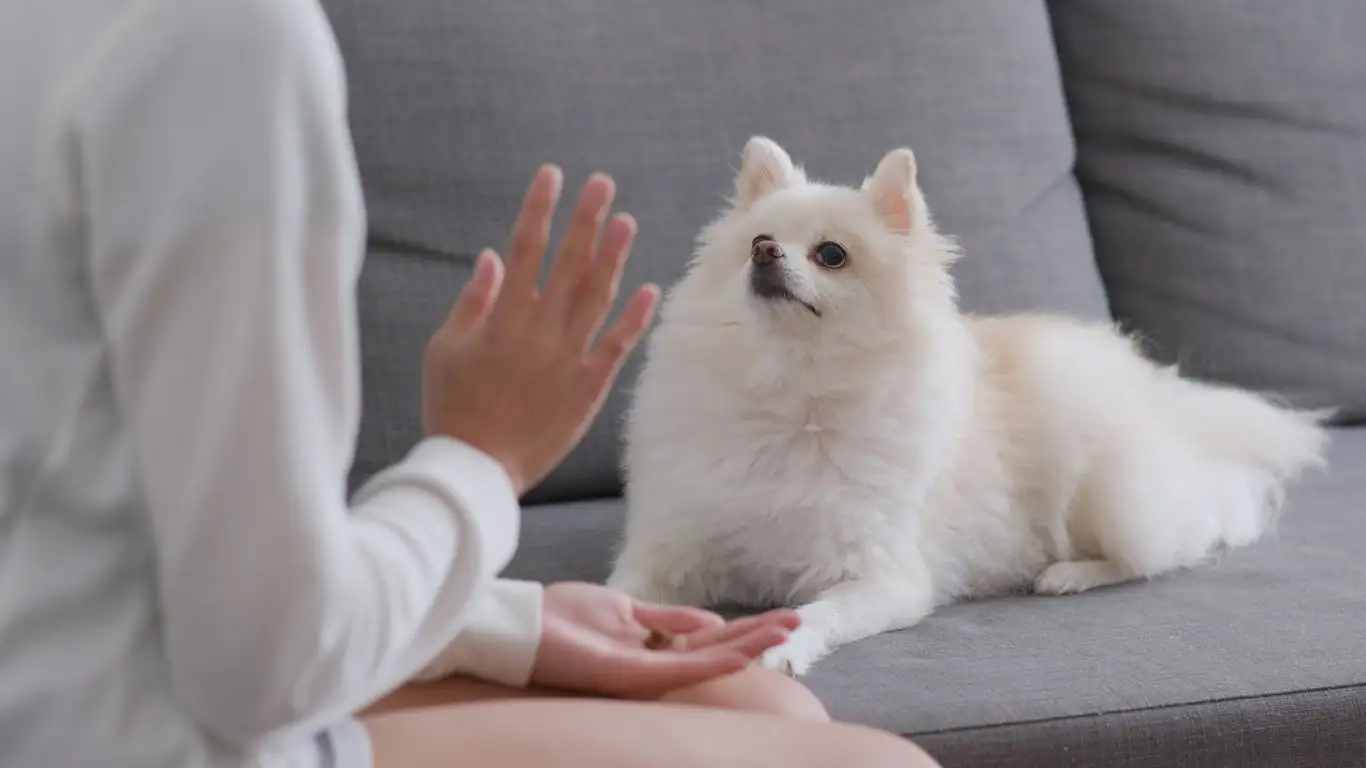
Consistency is key when it comes to training your dog to stay calm at the vet. A calming routine, both before and after the visit, can set your dog up for success. Over the years, I’ve found that dogs respond really well to routines. They thrive on knowing what to expect and when, especially in environments like the vet’s office where there are a lot of unknowns.
Here’s how to create a calming routine:
- Pre-visit preparations: The night before the vet visit, take a few moments to prepare your dog. You can start by giving your dog extra playtime or a nice walk to help them release any pent-up energy. This can make a huge difference in how your dog handles the vet visit. A tired dog is generally less stressed and more likely to stay calm. Also, avoid feeding your dog right before the visit. A full stomach can lead to discomfort, especially if your dog experiences any anxiety-related nausea.
- Pre-visit calming signals: Before you even step out the door, you can incorporate some calming cues. A simple “settle” command, where your dog lies down calmly and focuses on you, can be practiced before heading out. I like to use a calming voice and gentle petting to keep the atmosphere relaxed. You’ll be amazed at how even a few minutes of quiet time can lower your dog’s anxiety level.
- During the visit: Keep your dog distracted during the visit. While waiting in the lobby, bring along their favorite chew toy, or give them a treat puzzle to work on. I’ve noticed that many dogs are calmer when they have something to focus on, especially when they’re waiting for their turn. If you’ve been practicing desensitization, your dog should already feel more at ease with the space, but keeping them occupied can make a big difference in preventing nervous behaviors.
- Post-visit positive reinforcement: Once the visit is over, reward your dog with praise and extra treats. This positive reinforcement helps them associate the vet experience with something enjoyable. Whether your dog had a good or tough visit, let them know they did a great job by giving them attention and care once you’re back home. For dogs that are still building trust with the vet, I suggest keeping the post-visit routine calm and low-key to avoid overstimulating them after the stressful experience.
Building a routine around your dog’s vet visits will go a long way in helping your dog stay calm. By making sure every part of the visit—pre, during, and post—feels as positive as possible, your dog will slowly start to accept the experience as just another part of life.
Understanding and Managing Specific Vet-Related Triggers

In my experience, certain parts of a vet visit can trigger heightened stress in dogs. For some dogs, it’s the car ride; for others, it’s the exam table or the sound of a needle. If you’ve pinpointed the specific triggers that cause your dog to feel anxious, you can tailor your training plan to address those particular fears.
Here’s a breakdown of common vet-related triggers and how to manage them:
Car Anxiety
For many dogs, the anxiety begins before they even get to the vet. If your dog associates the car with an impending vet visit, they might start to show signs of stress as soon as they see the leash or hear the car keys jingling. This can make the ride to the vet a nightmare for both of you. To tackle this, start by desensitizing your dog to car rides in general:
- Short positive car rides: Take your dog on short, positive car trips to places they love, like the park or their favorite walking spot. Reward them for calm behavior during the ride.
- Use calming aids: Some dogs benefit from calming products like a pheromone spray or calming collar. These can help soothe your dog before, during, and after the car ride.
- Gradual increase in vet trips: If your dog is extremely anxious in the car, start with taking them to the vet but not going inside. Gradually increase the length of each trip until your dog begins to relax during the ride.
By making car rides a more enjoyable experience, you’ll help reduce the stress your dog feels when it’s time to head to the vet.
The Exam Table Fear
Another common trigger is the exam table. For many dogs, being placed on an unfamiliar surface while a stranger touches them can be anxiety-inducing. I’ve seen dogs that freeze, panic, or try to escape as soon as they’re placed on the exam table. To help your dog get more comfortable, practice these techniques:
- Practice at home: If your dog is scared of being on the table, try to replicate the experience at home. Use a raised surface like a table or a counter and train your dog to jump up and stay there for a few seconds at a time. Reward calm behavior, and gradually increase the duration of the “stay” on the table.
- Desensitize with touch: Some dogs are sensitive to being touched in certain areas, which can become a fear trigger at the vet. Start desensitizing your dog to being touched in areas like their paws, ears, and mouth. You can do this with gentle handling and lots of rewards for calm behavior.
- Use familiar scents: I recommend taking your dog’s favorite blanket or a piece of your clothing with you to the vet. Familiar scents can help calm your dog and provide some comfort in an unfamiliar environment.
The goal here is to make the exam table and the experience of being touched during exams less stressful by gradually desensitizing your dog and pairing the experience with rewards and positive reinforcement.
Enlisting Help from the Vet Staff

When it comes to vet visits, having a good relationship with the vet staff can make a world of difference. As a trainer, I often encourage dog owners to communicate openly with the veterinary staff about their dog’s anxiety. A vet that understands your dog’s nervousness can help make the visit less stressful for everyone involved.
Here’s how you can work with the vet staff to create a calming experience for your dog:
- Share your dog’s triggers: Let the vet and techs know what causes your dog to become anxious. For instance, if your dog hates the scale or gets nervous with certain medical equipment, it’s helpful for the staff to be aware so they can take extra care during those moments.
- Request a calm environment: Ask if the vet can minimize noise and distractions while working with your dog. Some dogs are sensitive to the sounds of other pets, so having a quieter environment can reduce stress.
- Ask for breaks: If the visit involves lengthy procedures, consider asking for short breaks so your dog can relax. This can be especially helpful if your dog is a bit older or has chronic anxiety.
By working with the veterinary staff, you’ll not only help reduce your dog’s stress, but you’ll also foster a more trusting relationship between your dog and the people providing their care.
Maintaining Calmness: Long-Term Strategies
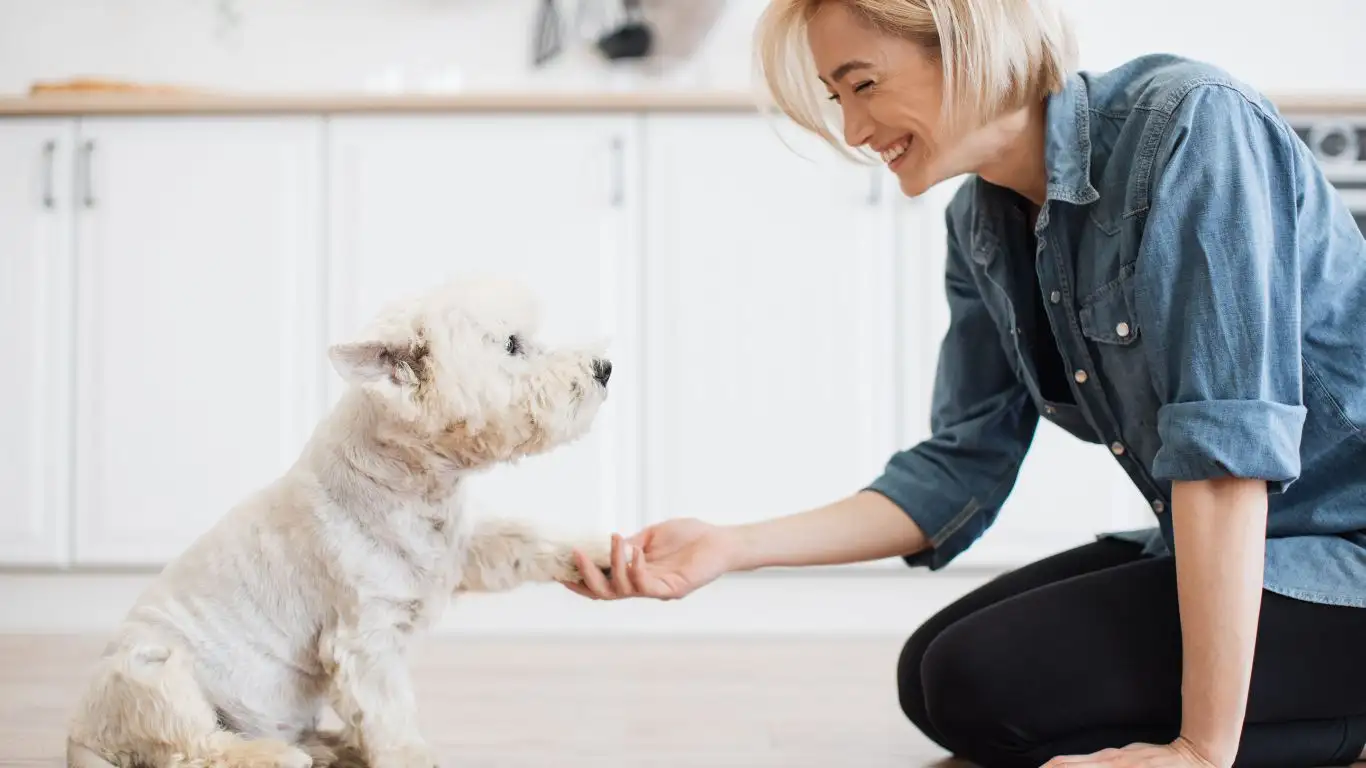
Now that you’ve laid the groundwork to train your dog to stay calm at the vet, it’s essential to incorporate long-term strategies that ensure your dog remains relaxed and confident during future visits. These strategies are all about consistency and continued training, as well as maintaining the positive associations you’ve created. Over the years, I’ve learned that one of the best ways to help dogs stay calm is by setting realistic expectations and gradually reinforcing their progress.
Here are some long-term strategies to keep your dog calm during vet visits:
- Regular vet visits: While it may sound counterintuitive, making regular vet visits (even when your dog isn’t sick) can help reduce anxiety. I recommend scheduling wellness checkups every six months, if possible. These checkups don’t have to involve much more than a quick exam and weigh-in, but they allow your dog to become familiar with the routine. The more familiar they are with the environment, the more likely they are to stay calm.
- Ongoing desensitization: Even after you’ve successfully trained your dog to stay calm, it’s important to continue desensitizing them to any lingering fears. For example, if your dog still feels uneasy when they’re put on the exam table, practice at home with a low table or countertop and slowly progress to mimicking a more realistic vet setting.
- Keep reinforcing calm behavior: Whenever your dog remains calm during vet visits, reinforce that behavior with praise and rewards. The key is to make sure that calmness is always rewarded, so they continue to associate the experience with something positive. It’s amazing how well dogs respond to a bit of encouragement!
Remember, training is a lifelong commitment. The more you incorporate calm behaviors into your dog’s routine, the better they’ll handle the vet visits. It’s all about maintaining that positive reinforcement, so your dog continues to see the vet as a place of normalcy rather than something to fear.
Behavioral Issues to Watch Out For

During your dog’s training, you may encounter behavioral issues that are specific to their anxiety. These can manifest in various ways, from excessive barking and panting to refusal to enter the vet’s office or even aggression toward the staff. As a dog trainer, I’ve seen firsthand how these behaviors can interfere with the training process, so it’s important to identify and address them early on.
Here are some common behavioral issues and how to handle them:
Fear-Based Aggression
One of the most concerning behaviors to watch for is fear-based aggression. This can occur when a dog feels cornered or threatened, and they may react by growling, snapping, or even biting. If your dog shows signs of fear-based aggression during vet visits, it’s essential to work with a professional trainer to address the root cause. Aggression can often be reduced by improving your dog’s confidence and teaching them that they are safe in the vet environment.
If you notice your dog becoming aggressive at the vet, consider the following steps:
- Ensure proper desensitization: Gradually expose your dog to vet-related stimuli, such as the vet’s office, the exam table, and the sounds of medical equipment. This should be done at a pace that is comfortable for your dog, using treats and rewards to build positive associations.
- Work on impulse control: Training basic commands like “leave it” and “stay” can help your dog manage their impulses when they feel threatened. A well-trained dog will have the tools to calm themselves and avoid reactive behaviors.
- Work with a professional trainer: If your dog’s aggression is severe, it’s a good idea to enlist the help of a professional trainer who can guide you through advanced behavior modification techniques.
Severe Anxiety and Panic Attacks
If your dog experiences panic attacks at the vet, you may see symptoms such as shaking, drooling, excessive panting, or even vomiting. These signs can be distressing, and it’s important to address them in a calm, methodical way. In my experience, some dogs require more intensive behavior modification or even medication to manage severe anxiety.
For dogs experiencing panic attacks, consider these approaches:
- Use calming products: In addition to training, there are calming products such as pheromone sprays, anxiety wraps, and calming collars that may help reduce your dog’s stress levels. These products can complement the desensitization and training efforts.
- Consider medication: For dogs with severe anxiety, medication prescribed by a veterinarian may be necessary. This can help calm your dog enough to proceed with training and can be a temporary measure as you work on long-term solutions.
- Gradual desensitization: As with aggression, desensitization is key. Take baby steps with your dog, gradually increasing their exposure to the vet environment without overwhelming them.
Helpful Resources and Tools for Dog Anxiety at the Vet
As a dog trainer, I’ve come across many helpful resources that can assist in the process of reducing your dog’s anxiety at the vet. From books and online courses to training aids and apps, there’s a wealth of information available. Here are a few tools I recommend to clients dealing with vet anxiety:
- Books: “The Anxiety Relief for Dogs” by Ben Spinks is a great resource for learning how to manage anxiety in dogs, including during vet visits.
- Calming products: The Adaptil pheromone diffuser is a favorite among dog owners I work with. It releases calming pheromones that can help soothe your dog during stressful situations, including trips to the vet.
- Training Apps: Apps like “Pet Coach” and “Dogo” offer training programs that you can use at home to reinforce calm behaviors and general obedience.
These resources, when used alongside the strategies outlined in this article, can help your dog stay calm and confident at the vet. If you’re struggling to manage your dog’s anxiety, don’t hesitate to reach out to a professional dog trainer or behaviorist for personalized guidance and support.
Disclaimer
The information provided in this article is based on personal experience and professional knowledge as a Certified Professional Dog Trainer (CPDT-KA). Each dog is unique, and results may vary. If your dog is experiencing severe anxiety or behavioral issues, it is strongly recommended to seek professional assistance from a veterinarian or an experienced dog trainer who specializes in behavior modification.
For more tips on dog training, behavior management, and anxiety reduction, feel free to explore more articles on our website PawPatron.org.
